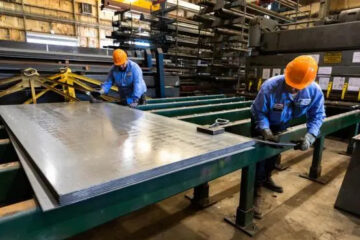When handling chemicals, the function of the lining is to prevent the chemicals from corroding the container, or to prevent the container itself from polluting the chemicals inside. Therefore, we are fighting against chemical corrosion and penetration, or protecting the high purity of chemicals to ensure the effectiveness of their applications.
The power and effectiveness of fluoropolymers lining lie in their inertness and is a high-end lining material. When you need to resist more corrosive alkalis, acids and solvents, especially when the chemical environment temperature reaches 180 °C or higher, fluoropolymers are the ideal choice for high-performance lining materials.
Custom fluoropolymer lining
- The custom lining is made of thick-specification virgin fluoropolymer sheet and can be used in various process equipment in harsh chemical services at temperatures up to 230°C.
- The thickness of the lining can be customized from 1.5 mm to 4.7 mm for customers to choose.
- We provide primarily different linings with smooth, non-sticky surfaces and the best heat resistance, permeability resistance and corrosion resistance, including loose linings and bonded linings.
- Loose lining
- Bonded lining
Lining material selection reference
Partially Fluorinated Polymer
It can provide excellent chemical corrosion protection in a range of chemical environments.
PVDF (Polyvinylidene Fluoride)
PVDF is the most commonly used fluoropolymer. It has excellent chemical resistance and can withstand temperatures up to approximately 230 °C, depending on the chemical service. It is an ideal choice for strong acids, solvents and treatment of deionized water.
ECTFE (Ethylene Chlorotrifluoroethylene)
ECTFE has excellent chemical resistance and is more resistant to corrosive and chloride environments than PVDF. Among all fluorinated materials, it has the lowest coefficient of expansion and is an ideal choice for high thermal cycle environments.
ETFE (Ethylene Tetrafluoroethylene)
ETFE is resistant to most chemicals. However, it should be avoided in some cases. For example, ETFE should not be used with concentrated oxidizing acids at high temperatures, basic amines, certain organic solvents, alkali metals at ambient temperatures, fluorine at high temperatures, and certain halogenated compounds.
Perfluorinated Polymer
Due to the strength of the fluorocarbon molecular bonds, they can resist almost all chemical attacks. If your goal is to maintain the ultra-high purity of the chemical, or your reaction will be severely corrosive, you may need a lining made of the following materials.
PTFE (Polytetrafluoroethylene)
PTFE is chemically resistant to almost all chemicals except alkali metals and fluorine at high temperatures, and has low permeability, making it the material of choice for the harshest and highest temperature corrosive environments.
FEP (Fluorinated Ethylene Propylene)
Although FEP is chemically inert, even FEP will be attacked by alkali metals, alkali metal organics and fluorine even at ambient temperature.
PFA (Perfluoroalkoxy)
PFA is the most chemically inert of all fluorinated materials. But its limitation is that PFA is easy to abrasion. Therefore, this type of lining should be avoided in the management of “particle slurry” projects.
Of course, our professional team will also provide you with more personalized technical assistance according to your specific needs to determine which fluoropolymer film and thickness combination is most suitable for your specific application. Welcome to contact us to discuss your project.



0 Comments